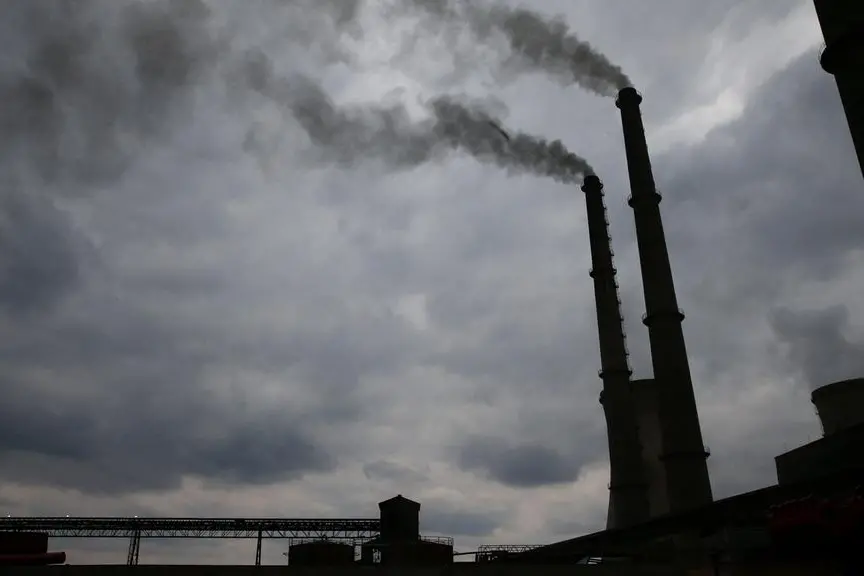PHOTO
(The opinions expressed here are those of the author, a columnist for Reuters.)
LAUNCESTON, Australia - China's imports of crude oil, coal and iron ore all soared to record highs in 2023, but this seemingly strong performance by the world's top commodity buyer comes with a few caveats.
Crude oil imports rose 11% in 2023 from the prior year to 11.28 million barrels per day (bpd), according to customs data released on Jan. 12.
This eclipsed the prior record of 10.81 million bpd from 2020, and came as China re-opened its economy after ending its strict zero-COVID policy at the end of 2022.
But is the gain in crude oil imports as impressive as it first appears?
In volume terms, 2023's arrivals were 1.11 million bpd higher than those in 2022.
However, this is well below the forecast for a 1.8 million bpd increase in China's oil demand from the International Energy Agency (IEA).
Of course, imports and total demand aren't the same thing, but looking at the other factors at work in China's crude oil market doesn't offer much support to the bullish view.
China's domestic oil production was only slightly higher, rising 1.8% in the first 11 months of 2023 compared to the same period a year earlier.
China is also continuing to add crude to either commercial or strategic inventories, with an estimated 670,000 bpd flowing to storage tanks in the first 11 months of the year.
China doesn't disclose the volumes of crude flowing into or out of strategic and commercial stockpiles, but an estimate can be made by deducting the amount of crude processed from the total of crude available from imports and domestic output.
In the first 11 months, the total available crude was 15.45 million bpd, while refinery throughput was 14.78 million bpd.
The volume being stored is slightly down on the 740,000 bpd added to inventories in 2022, but it still shows that China's refineries were building stockpiles, especially in the first half of 2023, rather than buying crude because domestic consumption was strong.
The last factor is China's exports of refined products, which jumped 16.7% in 2023 from the prior year to 62.69 million metric tons, which works out to about 1.37 million bpd, using the BP Plc standard conversion of 8 barrels of products per ton of crude.
This was the highest refined product exports since 2019, and was also about 190,000 bpd higher than the level recorded in 2022.
Putting all the factors together shows that while China imported record crude oil volumes, it also boosted fuel exports, kept crude flowing into inventories and fell well short of the optimistic forecasts for a surge in demand in 2023.
COAL DEMAND
China's imports of coal surged in 2023, jumping 61.8% from the prior year to reach 474.42 million tons.
While China's electricity demand did increase, the strong gain in coal imports was more related to factors that may prove to be temporary in nature.
Thermal power generation rose as hydropower struggled, with output dropping 7.1% in the first 10 months of the year.
The price of seaborne thermal coal also retreated sharply in 2023, making it more competitive against domestic production, which also struggled to rise fast enough to meet the increased electricity demand.
For 2024, it is likely that hydropower generation will increase, as will other renewables such as wind and solar, which may limit the increase in demand for thermal coal.
Iron ore was the surprise packet of China's commodity imports in 2023, with arrivals rising 6.6% from 2022 to reach an all-time high of 1.18 billion tons.
The increase was in spite of the well-publicised struggles of the key residential property sector, which in turn contributed to the modest - by China's standards - economic growth of around 5.4%.
But steel output is likely to hit a record high in 2023, as other sectors performed well, including vehicle manufacturing, infrastructure and exports of steel products.
The question for 2024 is whether China will continue to produce high volumes of steel, and the answer is that the economy is likely to grow sufficiently to use more steel, but not by enough to spark a surge in production.
This means that iron ore is likely to see modest increases in imports, but even that will result in another record year.
The opinions expressed here are those of the author, a columnist for Reuters.
(Writing by Clyde Russell; editing by Miral Fahmy)





















